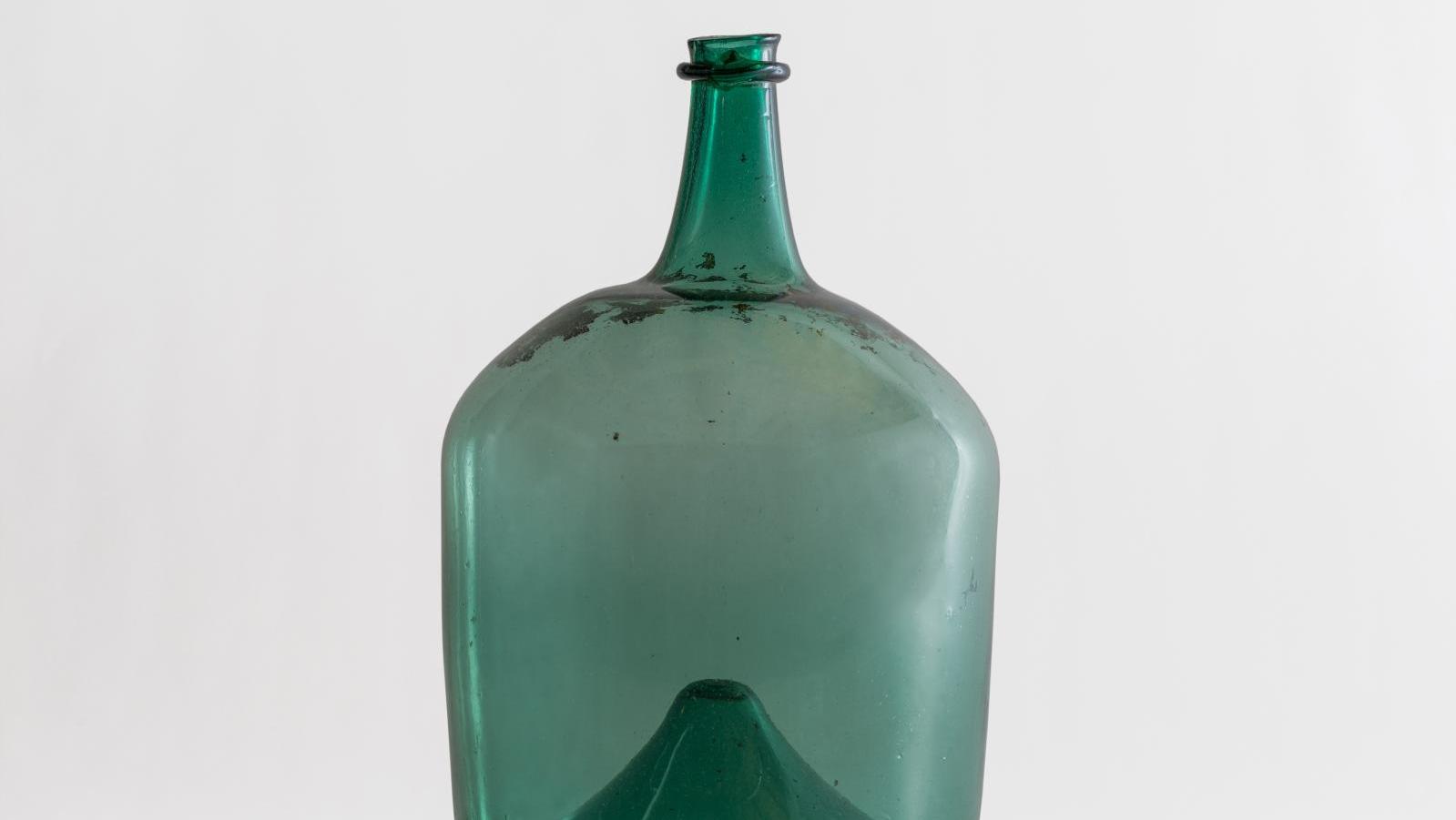Among all the existing containers, the cylindrical shape with its broad shoulders is the most recognizable. However, the history of the wine bottle augured creative freedom that finally bowed to the demands of gourmets.
Carboy or demijohn, forest glass works in South-West Languedoc, France (Carmaux, Tarn), 18th century.
© Musée du Verre, Carmaux, photo: Vincent Boutin
Once the art of glassmaking had been mastered, the invention of the blowpipe in the first century BCE enabled the first bottles to be made. Superb, square-shouldered, astonishingly modern-looking carafes have come down to us as examples of antiquity's refinement. They were only intended for serving: until the 17 th century , wine had to be consumed before the spring following the harvest; otherwise, it could turn to vinegar. After the fall of the Roman Empire, the subtle art of glassmaking declined with remarkable speed in the West. Medieval glassware was dull and modest. Iridescence gave the corroded age-old silica spectacular reflections that left the drinkers of the day unimpressed. It was not until Venetian crystalline glass was developed in the late 15 th…
com.dsi.gazette.Article : 24257
This article is for subscribers only
You still have 85% left to read.
